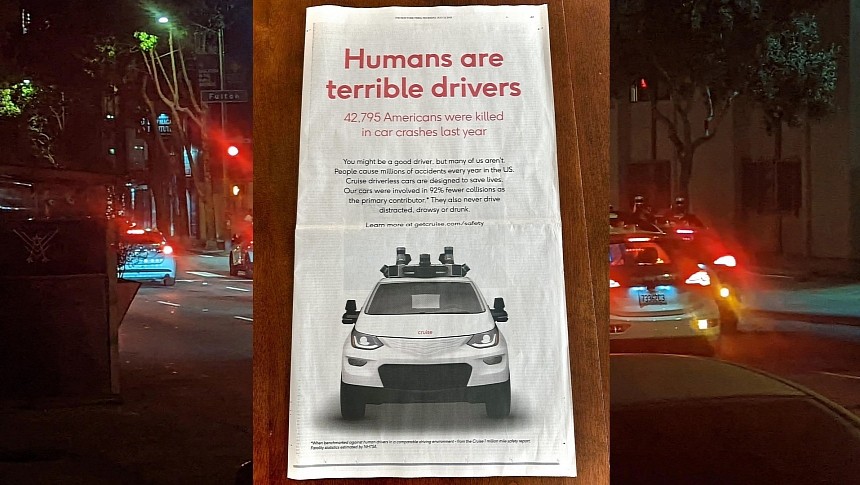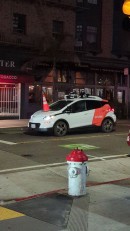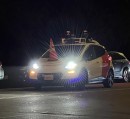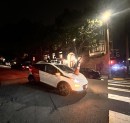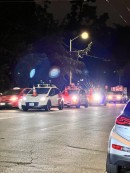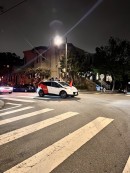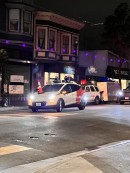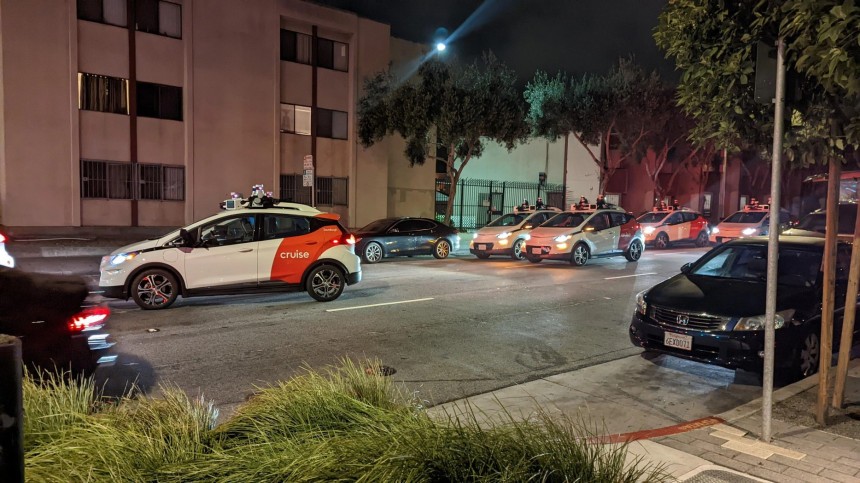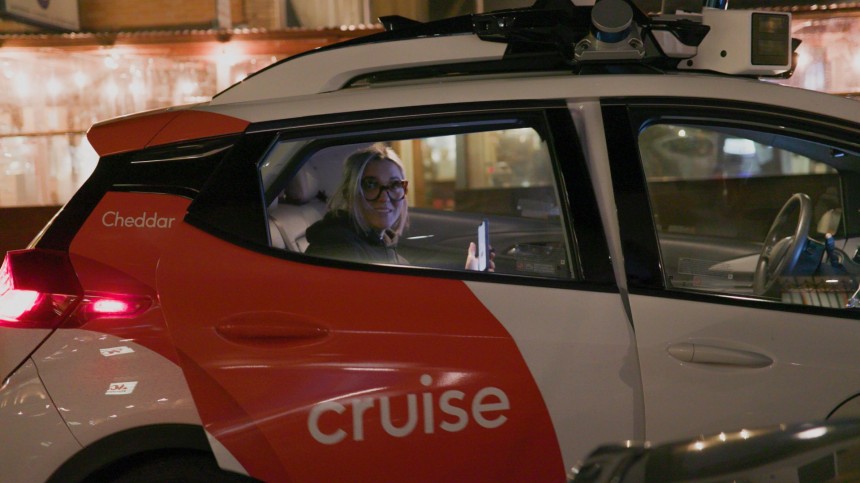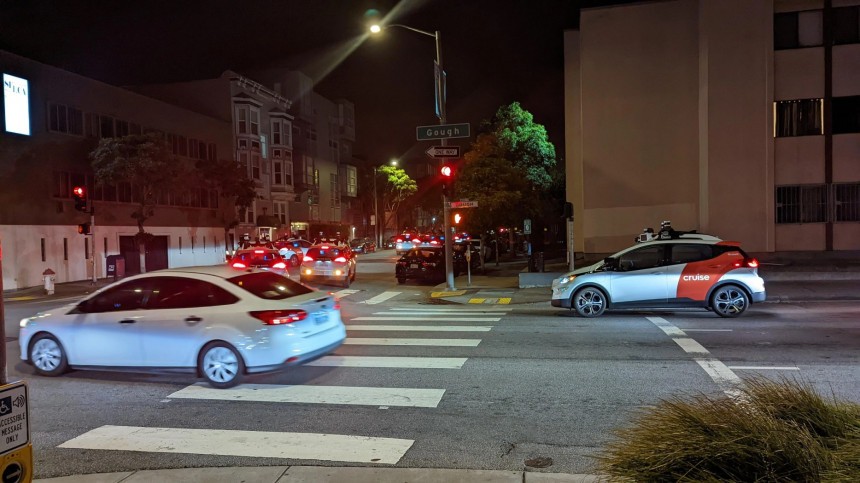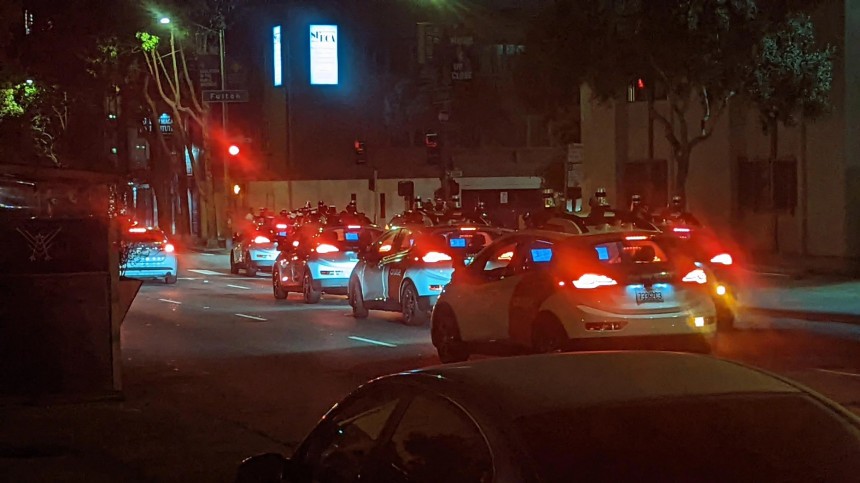"If you torture the data long enough, it will confess to anything." This quote is attributed to Ronald H. Coase, a British economist who won the Nobel Prize in 1991. Coase corrected that in a letter to T. Dudley Wallace written in 1975. What he said was: "If you torture the data long enough, nature will confess." In other words, truth will prevail. Ironically, this story about a recent Cruise advertisement admits both versions of Coase's quotation.
The autonomous vehicle (AV) company published the full-page ad above in "The New York Times and several local papers" on July 13. Stating that "humans are terrible drivers," the text also disclosed that 42,795 people died in car crashes in the US in 2022. In an apologetic tone, the ad states the people reading it may be good drivers, but many aren't – probably the ones not reading it.
It then proudly presents Cruise vehicles as being "involved in 92% fewer collisions as the primary contributor." A number above 90% can give the impression that no Cruise vehicle was ever wrong despite never driving "distracted, drowsy, or drunk," some of the leading causes of car crashes. Isn't it a perfect example of the perverted version of Coase's quote? Without proper context, the numbers paint humans as awful drivers.
However, those paying more careful attention to what the ad said will notice that Cruise AVs were the primary contributors in some crashes, even without any of human nature's flaws. This is why the company did not say they were never involved in collisions as the primary contributor or that it was involved in 100% fewer crashes in such a role. As Cruise stressed itself, machines do not get distracted: what is their excuse?
The AV company did not elaborate on what could have made its cars cause these wrecks. Despite that, this talk about 92% fewer collisions provided the first and only statistical clarification in the company's ad. An asterisk forwards us to a fine print. It says that Cruise AVs reached this number "when benchmarked against human drivers in a comparable driving environment – from the Cruise 1 million mile safety report. Fatality statistics estimated by NHTSA."
When he shared the ad on his LinkedIn account, Kyle Vogt wrote: "Human drivers just aren't good enough. America can do better. It is time we fully embrace AVs." Too bad the Cruise CEO apparently did not read a story Jalopnik published on March 3 that represents what Coase really meant to say. Steve DaSilva calculated how safe AVs would have to be to at least match human drivers, and the results show that fully embracing autonomous cars now would be too soon.
DaSilva used numbers the National Highway Traffic Safety Administration (NHTSA) obtained regarding 2020, although he thought they related to 2021. In the text, he explained how human drivers had no trouble 99.999819% of the time in the US. DaSilva reached that figure by dividing the number of crashes that year (5,250,837) by the vehicle miles traveled (VMT): 2,903,622,000,000 miles. After checking the numbers, I discovered the true number of police-reported crashes was actually 5,215,071. Curiously, that did not change DaSilva's numbers that much. In fact, it made them better: 99.999820%. That's a very high bar for autonomous driving to overcome: it needs to do so at least 99.9999% of the time to improve.
Out of curiosity, I calculated the 2021 numbers. According to the safety regulator, drivers in the US drove 3,140,088,000,000 miles in a year that registered 6,722,597 police-reported crashes, which translates into one collision for every 467,094 miles traveled. In other words, it means human drivers had no issues 99.999786% of the time. In this case, AVs would only need to achieve a safety rate of 99.9998% to be better, but that also proves human drivers are very, very good.
You may wonder about the 2022 numbers, but there are other details you should carefully consider here. In 2021, the US was still involved with the international health crisis, so people drove a lot less than they usually do. However, 42,939 people died due to traffic collisions that year. As Cruise published in its ad, the number was 42,795 in 2022. That means that fewer people died in a year when they drove a lot more. Luckily, NHTSA already disclosed some bits of information about last year in its reports.
The safety regulator said that vehicle miles traveled (VMT) in 2022 increased by about 29.3 billion miles, or 0.9%. Adding that to the 3.14 trillion VMT in 2021, we get 3,169,388,000,000 miles. However, here's something that may explain the wrong number in DaSilva's story: NHTSA updated the VMT for 2021. It is no longer 3,140,088,000,000 miles but rather 3,132,411,000,000, as you can check in the latest numbers from the Federal Highway Administration (FHWA). This figure also appears in a document called Quick Facts 2021, and the safety regulator confirmed to me it is the correct one.
With that in mind, the 29.3 billion increase last year means the VMT was 3,161,711,000,000 in 2022 – if it does not get updated. Unfortunately, NHTSA said the police-reported crashes for last year have not been published so far. Supposing they stayed the same, we would have one collision every 471,453 miles and a "safety efficiency" of 99.999985%.
Even with such a low tendency to commit errors on the road, human driving still killed 42,795 people in the US in 2022. This shows just how good AVs would have to be to beat that – error-proof would be an understatement. Yet, just look at what is happening with autonomous cars and all the recent news about them.
Cruise probably leads the headlines with its vehicle frequently jamming the streets of San Francisco. Waymo cars also do that but in a smaller proportion. The deal is that this should not happen. The companies insist on having their AVs with no one at the steering wheel as a backup, which led them to block emergency vehicles more than once. Fed up with that, some residents discovered that traffic cones placed on the vehicles' hoods could immobilize them: it is like blindfolding the driver.
ABC7 News talked to a member of the group Safe Street Rebels, who oppose having AVs testing on public roads and started placing the cones on top of the vehicles. The unidentified man said people did not consent to being used as guinea pigs. If these AVs had anyone from their companies inside them, that would be no problem: even if anyone managed to put a cone on the hood, these assistants would just have to leave the vehicle, remove it, and keep going. They could also have avoided stranding streets where firefighters or police officers had to cross in their mission to help others.
Safe Street Rebels are not alone: autonomous vehicle safety experts also criticize unmanned AVs on public roads at this point in their development. So far, the issues were only related to cars stopping where they should not, but Uber and Tesla show us that things could get worse pretty fast.
Do not expect Waymo or Cruise to defend anything other than how they are doing their tests. They will use the numbers to try to convince you how bad you are at driving so that their businesses may flourish despite their evident and public flaws. It is up to you to listen to "nature" – and truth – and not accept something that is not correct. Those of you driving while texting, drinking before driving, or risking hitting the road tired can always call a cab or take a bus. That alone will improve our numbers even more – and may save thousands of lives. What we really need is common sense.
If AV companies could sell that, they would make a ton of money. As they can't, they should focus on maturing their tech before performing public tests and torturing statistics to paint them in a better light. After all, nature will confess. That are people ready to amplify that whenever that is necessary. I humbly pledge my allegiance to what they defend: the truth.
It then proudly presents Cruise vehicles as being "involved in 92% fewer collisions as the primary contributor." A number above 90% can give the impression that no Cruise vehicle was ever wrong despite never driving "distracted, drowsy, or drunk," some of the leading causes of car crashes. Isn't it a perfect example of the perverted version of Coase's quote? Without proper context, the numbers paint humans as awful drivers.
However, those paying more careful attention to what the ad said will notice that Cruise AVs were the primary contributors in some crashes, even without any of human nature's flaws. This is why the company did not say they were never involved in collisions as the primary contributor or that it was involved in 100% fewer crashes in such a role. As Cruise stressed itself, machines do not get distracted: what is their excuse?
When he shared the ad on his LinkedIn account, Kyle Vogt wrote: "Human drivers just aren't good enough. America can do better. It is time we fully embrace AVs." Too bad the Cruise CEO apparently did not read a story Jalopnik published on March 3 that represents what Coase really meant to say. Steve DaSilva calculated how safe AVs would have to be to at least match human drivers, and the results show that fully embracing autonomous cars now would be too soon.
DaSilva used numbers the National Highway Traffic Safety Administration (NHTSA) obtained regarding 2020, although he thought they related to 2021. In the text, he explained how human drivers had no trouble 99.999819% of the time in the US. DaSilva reached that figure by dividing the number of crashes that year (5,250,837) by the vehicle miles traveled (VMT): 2,903,622,000,000 miles. After checking the numbers, I discovered the true number of police-reported crashes was actually 5,215,071. Curiously, that did not change DaSilva's numbers that much. In fact, it made them better: 99.999820%. That's a very high bar for autonomous driving to overcome: it needs to do so at least 99.9999% of the time to improve.
You may wonder about the 2022 numbers, but there are other details you should carefully consider here. In 2021, the US was still involved with the international health crisis, so people drove a lot less than they usually do. However, 42,939 people died due to traffic collisions that year. As Cruise published in its ad, the number was 42,795 in 2022. That means that fewer people died in a year when they drove a lot more. Luckily, NHTSA already disclosed some bits of information about last year in its reports.
The safety regulator said that vehicle miles traveled (VMT) in 2022 increased by about 29.3 billion miles, or 0.9%. Adding that to the 3.14 trillion VMT in 2021, we get 3,169,388,000,000 miles. However, here's something that may explain the wrong number in DaSilva's story: NHTSA updated the VMT for 2021. It is no longer 3,140,088,000,000 miles but rather 3,132,411,000,000, as you can check in the latest numbers from the Federal Highway Administration (FHWA). This figure also appears in a document called Quick Facts 2021, and the safety regulator confirmed to me it is the correct one.
Even with such a low tendency to commit errors on the road, human driving still killed 42,795 people in the US in 2022. This shows just how good AVs would have to be to beat that – error-proof would be an understatement. Yet, just look at what is happening with autonomous cars and all the recent news about them.
Cruise probably leads the headlines with its vehicle frequently jamming the streets of San Francisco. Waymo cars also do that but in a smaller proportion. The deal is that this should not happen. The companies insist on having their AVs with no one at the steering wheel as a backup, which led them to block emergency vehicles more than once. Fed up with that, some residents discovered that traffic cones placed on the vehicles' hoods could immobilize them: it is like blindfolding the driver.
Safe Street Rebels are not alone: autonomous vehicle safety experts also criticize unmanned AVs on public roads at this point in their development. So far, the issues were only related to cars stopping where they should not, but Uber and Tesla show us that things could get worse pretty fast.
If AV companies could sell that, they would make a ton of money. As they can't, they should focus on maturing their tech before performing public tests and torturing statistics to paint them in a better light. After all, nature will confess. That are people ready to amplify that whenever that is necessary. I humbly pledge my allegiance to what they defend: the truth.
